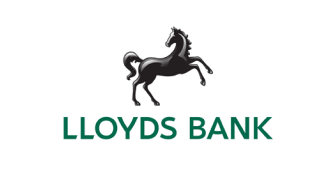How does invoice finance work?
![]()
While the process depends on the type of invoice financing you’re using, generally:
- The business sends sales invoices to its customers and a copy to the finance provider.
- The provider pays an agreed percentage of the invoice value, which could be as much as 90% or even the full amount, into the business bank account.
- Depending on the agreement, the business or the provider sends reminders and correspondence about payment to the customer.
- Once the customer pays the full invoice amount, the provider releases the remaining amount, with their fees and charges deducted.
The loan isn't repaid until the original invoice has been settled by the customer.
Is invoice finance right for my business?
If late payment of invoices is affecting your cash flow, invoice financing could be an option. That’s because it can free up working capital sooner than waiting for customers to pay.
Invoice finance is open to many sectors and industries, but there are some eligibility requirements.
The lender will usually ask that your business:
- invoices business customers, not consumers
- meets minimum turnover requirements
- is a sole trader, limited company or limited liability partnership
- sells on usual credit terms of 30 to 90 days
- can show evidence of a trading history
Not all lenders ask that your business meets all these requirements, and rates and the application process varies. An invoice finance broker can help streamline the process by comparing a number of lenders that fit your criteria on your behalf.
Types of invoice finance
It’s not only important to weigh up whether invoice finance is the right fit for your business, but which type of invoice finance might be most appropriate.
Invoice discounting
If your business uses invoice discounting, you, not the lender, maintains control of your sales ledger and the collection of customer payments. This means the agreement will remain confidential and shouldn’t affect client relationships, but can be more time-consuming than other forms of invoice finance.
Due to the retention of control, invoice discounting is usually available to more established businesses, or ones with a higher turnover.
Factoring
Invoice factoring is a whole package of services, which involves outsourcing the collection of invoices to the factoring company. This means your customers will be aware of the arrangement, as the factoring company will be dealing with them directly about payments.
Even so, arrangements can be flexible. It’s possible to get confidential invoice factoring, where the provider manages the credit control, but uses your business branding. That way, the customer isn’t aware of the arrangement.
Since the lender takes control of invoice factoring, it is more likely to be available for companies with a limited trading history, or smaller turnover, than invoice discounting.
Selective invoice finance
Selective invoice factoring, sometimes called spot factoring, is where you choose which specific invoices or customer account you want to finance. This means it’s a more flexible option if you’re not looking to outsource your whole sales ledger and want to take a more ad-hoc approach.
If you do this for multiple invoices, it may be more cost-effective to use factoring or discounting. And if you’re a new business with a limited trading history, it may be easier to get other types of invoice finance.
Recourse and non-recourse invoice finance
Invoice factoring with recourse means your business is liable for your customer’s debts. If the lender can’t collect payment, your business will be liable to refund the cash advance for that invoice and effectively buy it back. This may mean you get higher initial cash advances from the lender, as the risk is on you to feel confident your customers will pay up on time.
Non-recourse factoring means the factoring company takes on the risk and responsibility of customers’ debts if they fail to pay. It may also be referred to as bad debt protection, or invoice insurance. This option is likely to cost you more, and the lender will want to be sure your business can show an extensive history of prompt customer payment.
Bear in mind there may be exceptions to what is covered by the non-recourse agreement, so read the small print carefully. For example, it may only apply if the customer becomes insolvent, or you may not be covered if the customer has grounds to dispute the invoice.
What businesses use invoice finance?
Any business that relies on customer invoices may be able to benefit from using invoice finance. Just a small selection of businesses that could use invoice finance includes:
- accountancy firms
- recruitment companies
- construction companies
- architects
- advertising firms
- publishers
- professional services firms
- security companies

















